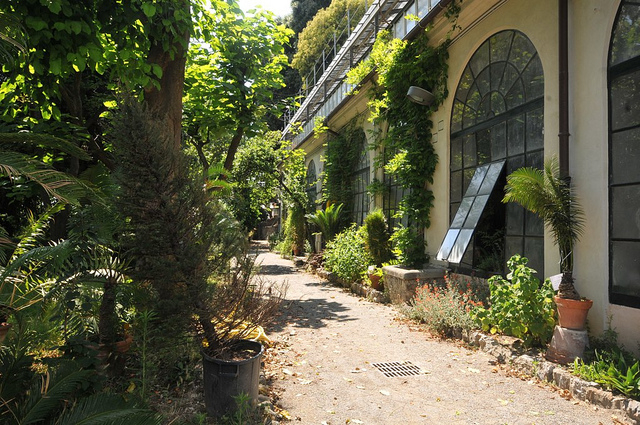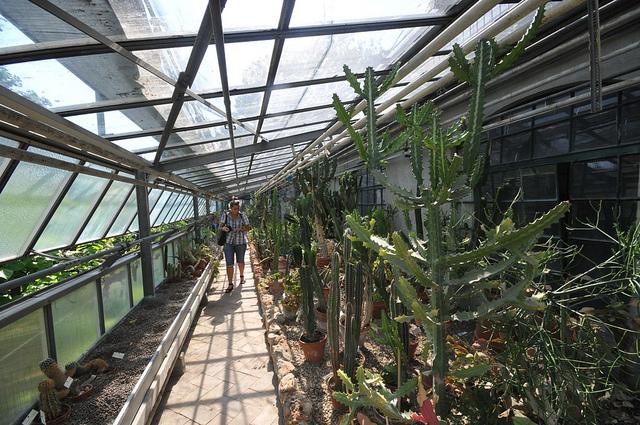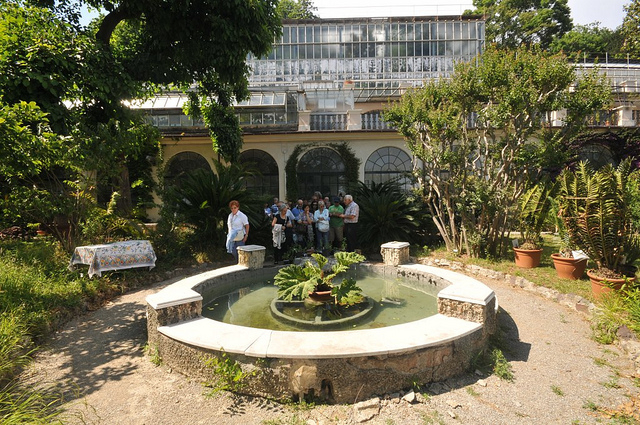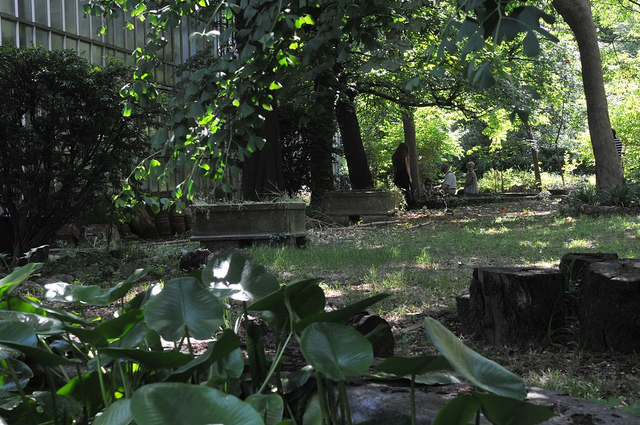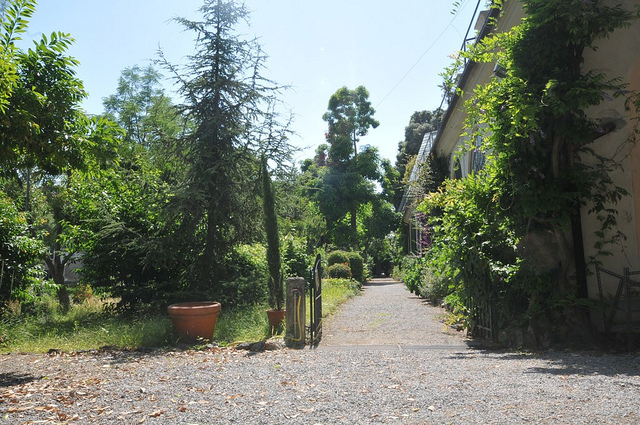Botanical Garden Corso Dogali (University)
This Botanical Garden, located within the city's historic centre, boasts a surface area of about one hectare. The specimens housed in the Garden currently total about 4000, with approximately 2000 taxonomic groups represented. Within the garden, visitors can observe aquatic tanks and trees of considerable dimensions, as well as a typical Mediterranean forest and collections of ferns (Osmunda regalis) and palms.
Some specimens date back to the time the garden was created, such as the soaring cypress trees (Cupressus sempervirens L.), an old cedar from Lebanon (Cedrus libani A. Rich.), a majestic Firmiana simplex (L.) W. F. Wight, a Gleditsia triacanthos L., and a Sequoia sempervirens (D. Don).
The greenhouses
Approximately 1000 square metres are occupied by the 6 greenhouses built on three different levels and reproducing a variety of environmental conditions. The first hosts ferns of different arboreal species, including 3 species of the genus Cibotium from Central and South America, and a rare, Asian Angiopteris evecta. The second greenhouse contains tall tropical plants rooted in the ground, among which it is worth mentioning several beautiful specimens of the Ficus (25 different species) and Sterculia genera, banana, sugar cane and cocoa. A third displays tropical aquatic plants, including different species of water lilies, papyrus, bromeliaceae, orchids, and a series of food-related plants with non-European origins (coffee, pineapple, mango, vanilla, breadfruit tree, etc.).
The rich collection of succulents includes 30 species of the Euphorbia, Aloe, and Agave genera. Another greenhouse is home to beautiful, impressive specimens of Cycadaceae, while the last greenhouse (located underground) is used for applied botany research.
Medicinal plants
Thanks above all to contributions from the Associazione Amici dell’Orto Botanico dell’Università di Genova (Friends of the Botanical Garden of the University of Genoa Association), the old medicinal plants area was reopened in 2008. These plants are a perfect blend of traditional Italian medicine traditions and plants originating from other continents, with particular attention paid to the species most often used in herbal medicine today.
A few of these traditional plants include Valerian, Angelica, Chamomile, Digitalis, St. John's Wort and Hemlock. Those arriving from other continents include the Tea plant, Perilla, Echinacea, Stevia and Jojoba. Other important plants of medicinal interest, such as Ginkgo and Pilocarpus, mostly shrubs or trees, can be found in other areas of the Botanical Garden.
About 150 medicinal plants are now grown in the garden.
Visiting the Garden
OPENING TIME
Monday/Wednesday/Friday from 8.30a.m. to 1.30p.m.
Tuesday/Thursday from 8.30a.m. to 7.00p.m.
Free entrance
For more information about special openings or opening time during holidays, please call the association “Amici dell’Orto Botanico dell'Università di Genova” at the phone number +39 333 6127539 or consult the web site http://www.ambog.org.
GUIDED TOURS
Guided tours are available on reservation by the association “Amici dell'Orto dell’Università di Genova” and the Botanical Garden. Educational activities and guided tours for schools are available. For more information and to reserve, please call the association at the phone number +39 3336127539 or the switchboard at the phone number +39 010 2099392 or Ms Turcato Claudia at the phone number +39 347 3712592
Tours organised and led by the Friends of the Botanical Garden Association are free of charge.
Useful info




